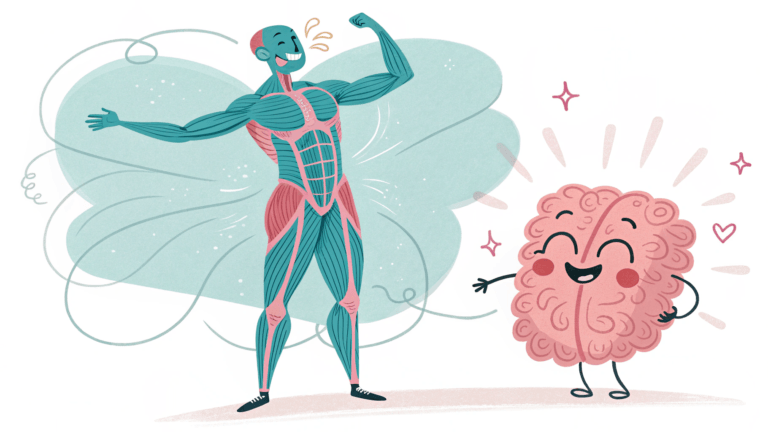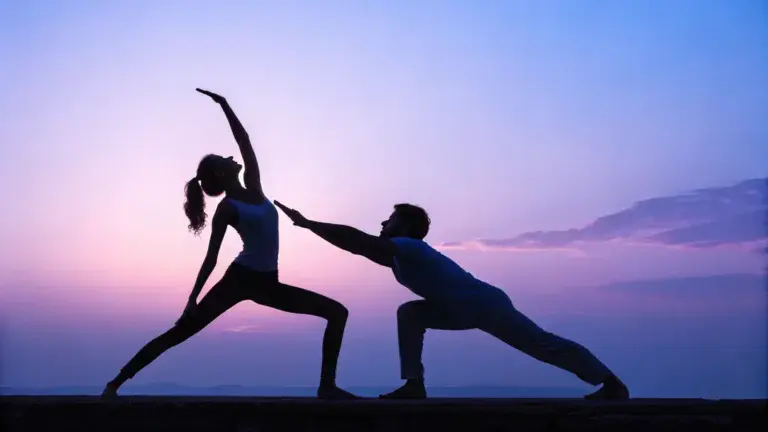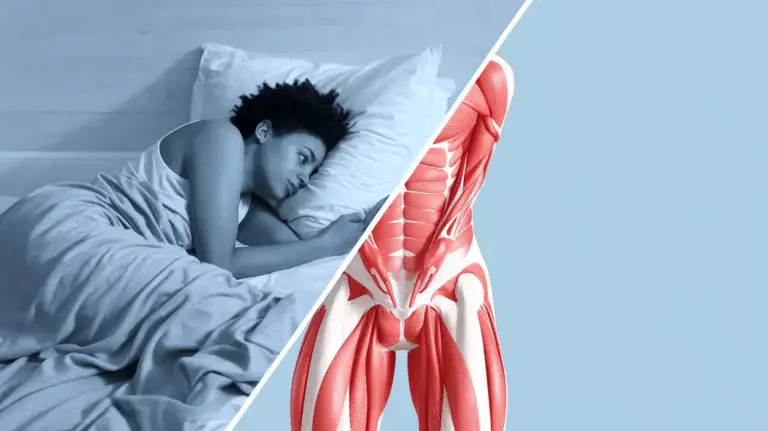Do you experience stiff hips, lower back pain, or tightness after sitting for long periods, during workouts, or even just throughout your day?
The culprit might be your hip flexors – a crucial group of muscles at the top of your thighs responsible for essential movements like walking, running, bending, and lifting your knees.
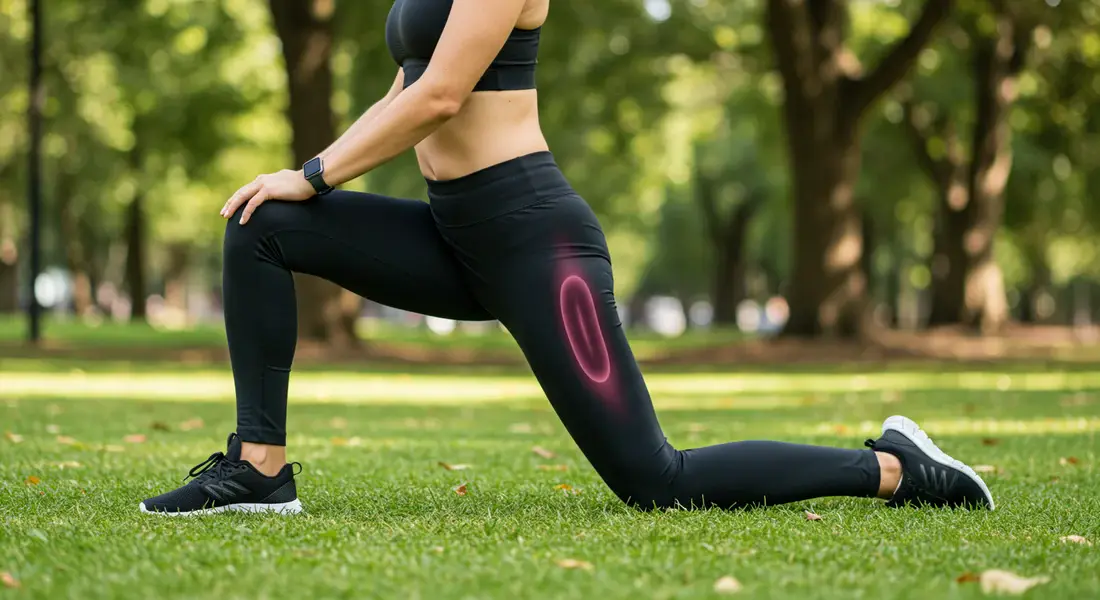
In today’s sedentary world, tight hip flexors have become increasingly common due to prolonged sitting, repetitive movements, poor posture, and lack of stretching.
The good news?
You don’t need expensive equipment or a gym membership to address this issue.
This guide provides an effective equipment-free hip flexor workout you can do anywhere, anytime to relieve tightness, improve mobility, and enhance your overall well-being.
By incorporating these simple yet powerful bodyweight exercises into your routine, you can unlock your hip flexors, alleviate discomfort, and improve both your daily movement and athletic performance without needing any special equipment.
Understanding Your Hip Flexors – Why They Matter and Why They Tighten

What are the hip flexor muscles?
Your hip flexors are a group of muscles including:
- Iliopsoas (iliacus and psoas major) – the primary hip flexor
- Rectus Femoris – part of the quadriceps
- Sartorius – the longest muscle in the body
- Tensor Fasciae Latae (TFL) – works with the IT band
- Pectineus – a small muscle in the inner thigh
These muscles work together to flex the hip (bringing the knee closer to the chest) and are essential for walking, running, climbing stairs, squatting, and kicking.
Why do hip flexors get tight?
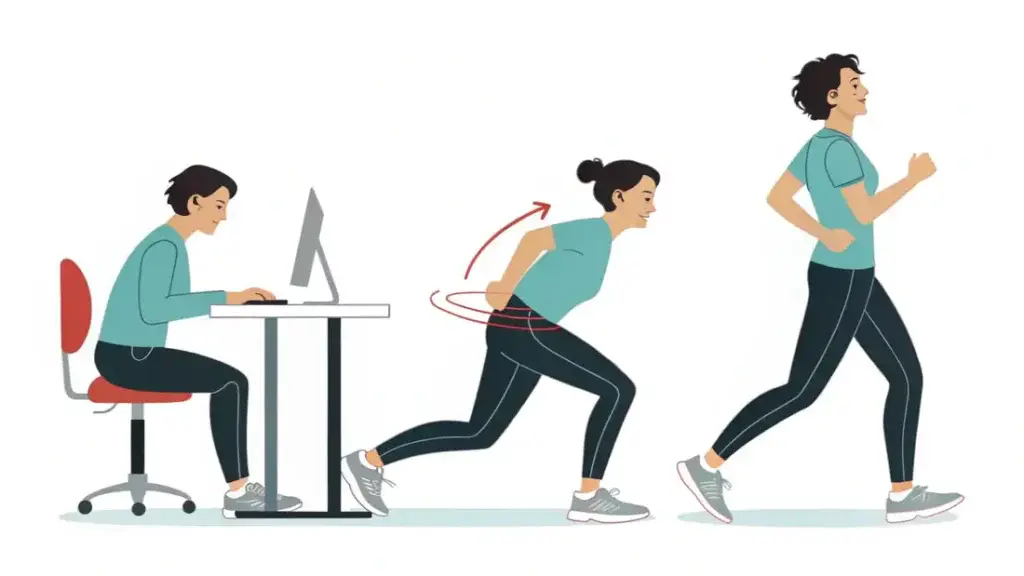
- Prolonged sitting: When you sit, your hip flexors remain in a shortened position for extended periods
- Repetitive leg movements: Running, cycling, and hiking can cause tightness
- Lack of regular stretching: Neglecting flexibility work leads to stiffness over time
- Poor posture: Anterior pelvic tilt can strain hip flexors
- Muscle imbalances: Weak glutes and core can cause hip flexors to overcompensate
The Benefits of an Equipment-Free Hip Flexor Workout
- Increased flexibility and mobility: Allows for a greater range of motion in the hips
- Reduced hip and lower back pain: Relieving tension in hip flexors can alleviate discomfort
- Improved posture: Helps correct anterior pelvic tilt and promotes better alignment
- Enhanced athletic performance: Allows for a more efficient stride in running and better execution of movements
- Injury prevention: Strong and flexible hip flexors are less prone to strains and tears
- Convenience: Can be done anywhere, anytime without the need for a gym or equipment
- Accessibility: Suitable for all fitness levels
- Improved core stability: Strong hip flexors contribute to a stronger core
- Better squat depth: Increased hip mobility can improve your squat form
Your Equipment-Free Hip Flexor Workout – Step-by-Step Guide
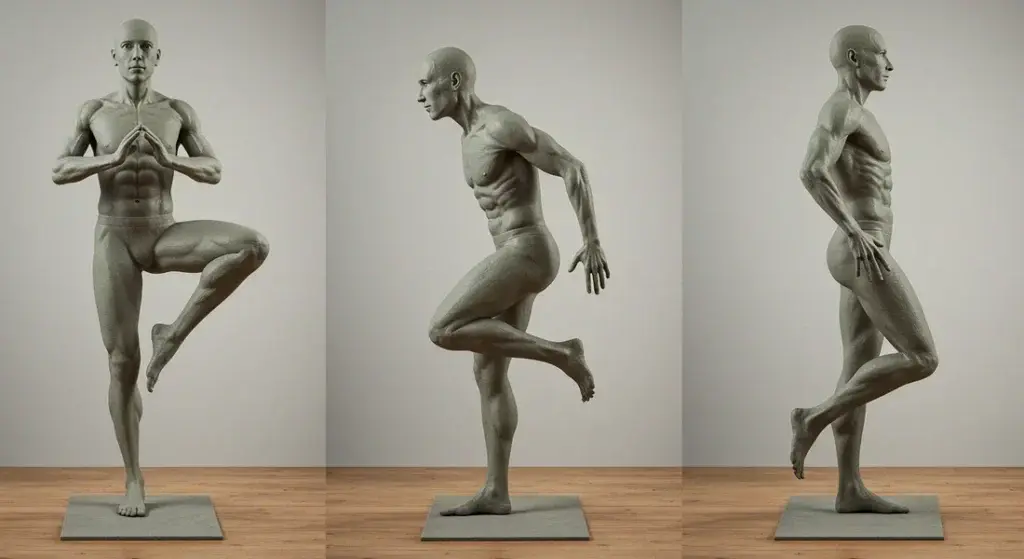
Warm-up (2-3 minutes)
Perform these light movements to prepare your body:
- Leg swings: Stand beside a wall for support. Swing one leg forward and back 10 times, then side to side 10 times. Repeat with the other leg.
- Hip circles: Stand on one leg, lift the other knee up, and make 10 circles in each direction. Repeat with the opposite leg.
- Gentle high knees: March in place for 30 seconds, gradually bringing knees higher.
The Exercises
| Exercise | Instructions | Reps/Time | Benefits |
| Kneeling Hip Flexor Stretch | 1. Kneel on one knee, with the other foot flat on the floor in front of you. 2. Keep your torso upright and push your hips forward. 3. Optional: Raise the arm on the same side as your back leg for a deeper stretch. 4. Hold, then switch sides. | Hold 30 seconds each side | Directly stretches the hip flexors, especially the psoas |
| Forward Lunges | 1. Stand with feet hip-width apart. 2. Step forward with one leg, lowering until both knees are bent at 90 degrees. 3. Ensure front knee aligns with ankle. 4. Push back to starting position. 5. Repeat, alternating legs. | 10-12 each leg | Strengthens quads while stretching hip flexors |
| Straight Leg Raises | 1. Lie on your back with one leg straight and one knee bent. 2. Keeping the straight leg extended, raise it to the height of the opposite knee. 3. Lower slowly and with control. | 12-15 each leg | Strengthens hip flexors and improves control |
| Mountain Climbers | 1. Begin in a push-up position. 2. Bring one knee toward your chest, then return to starting position. 3. Alternate legs in a running motion. 4. Keep back flat and neck neutral. | 30 seconds | Dynamically works hip flexors while engaging core |
| Bridge | 1. Lie on your back with knees bent, feet flat. 2. Push through heels to lift hips toward ceiling. 3. Squeeze glutes at the top. 4. Lower with control and repeat. | 12-15 reps | Strengthens glutes to balance hip flexors |
| Scissors | 1. Lie on your back with legs extended. 2. Lift both legs slightly off the ground. 3. Open and close legs in a controlled scissoring motion. 4. Keep core engaged and back flat. | 30 seconds | Works hip flexors in an extended position |
| Clamshell | 1. Lie on your side with knees bent at 45 degrees. 2. Keep feet together and raise the top knee while keeping feet touching. 3. Keep hips stacked and core engaged. 4. Lower and repeat. | 12-15 each side | Strengthens hip abductors to balance flexors |
| Swimming Superman | 1. Lie face down with arms extended overhead. 2. Lift chest, arms, and legs off the ground. 3. Flutter kick legs while maintaining the lift. 4. Keep neck in neutral position. | 30 seconds | Strengthens posterior chain to balance flexors |
| Active Hip Flexor Stretch | 1. Start in a lunge position. 2. Engage the glute of your back leg. 3. Push hip forward while slightly lifting the back knee. 4. Hold briefly, then release. | 10 reps each side | Combines stretching with activation |
| Supine Hip Flexor Stretch | 1. Lie on your back with legs extended. 2. Pull one knee to your chest. 3. Keep the other leg extended and pressed into the floor. 4. Hold, then switch. | Hold 30 seconds each side | Gentle stretch for those with back issues |
| Seated Hip Flexor Stretch | 1. Sit on the edge of a chair. 2. Extend one leg backward. 3. Lean forward slightly while keeping back straight. 4. Feel the stretch in the front of the extended leg’s hip. | Hold 30 seconds each side | Great for office breaks |
| Prone Hip Flexor Stretch | 1. Lie face down. 2. Bend one knee and gently grab your foot. 3. Pull heel toward buttock while keeping hips flat. 4. Hold, then switch sides. | Hold 30 seconds each side | Intense stretch for rectus femoris |
| Dynamic Lunges | 1. Start in a standing position. 2. Step forward into a lunge. 3. Push back to starting position. 4. Alternate legs in a fluid motion. | 10-12 each leg | Dynamic strengthening for better function |
| Psoas March | 1. Lie on your back with knees bent, feet flat. 2. Lift one knee toward chest. 3. Lower and repeat with the other leg. 4. Maintain neutral spine throughout. | 12-15 each leg | Isolated strengthening of the psoas |
Equipment-Free Hip Flexor Exercises. Click to download document
Cool-down (2-3 minutes)
Finish with these gentle stretches:
- Hold the kneeling hip flexor stretch for 30 seconds on each side
- Perform gentle hamstring stretches by sitting with legs extended and reaching toward your toes
- Take several deep breaths to relax the body
Making It a Routine – Integrate Your Equipment-Free Workout
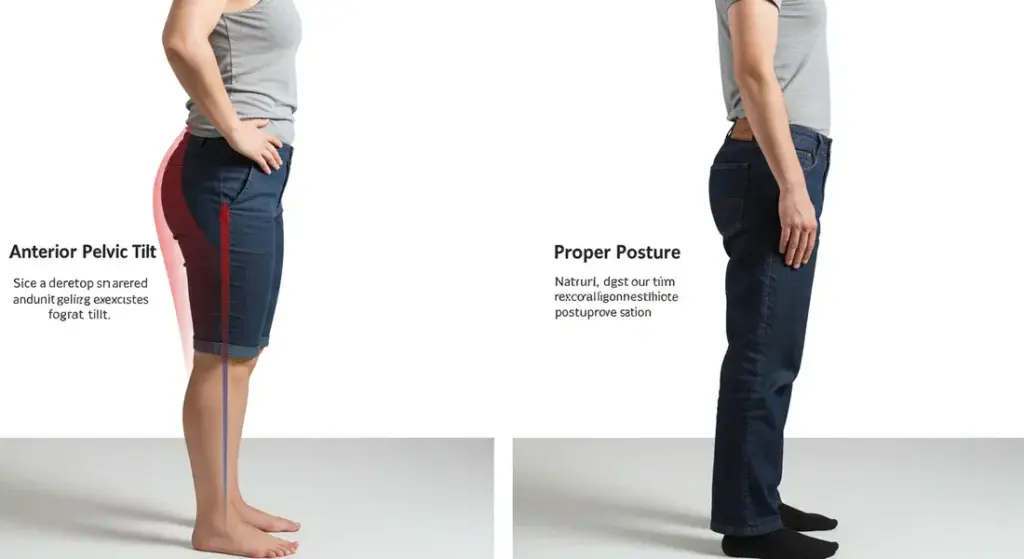
How to make this workout part of your lifestyle
- Consistency is key: Perform these exercises regularly for the best results
- Frequency: Aim for 2-3 times per week, or even daily maintenance if you sit for long periods
- Timing: You can do this workout before or after other exercise, or as a standalone routine
- Listen to your body: Some discomfort during stretching is normal, but stop if you feel sharp pain
- Progression: As you improve, increase repetitions, sets, or hold times
- “Movement snacks”: Incorporate brief periods of these exercises throughout your day, especially if you sit for long periods
- Combine with other healthy habits: Maintain proper posture while sitting and take regular movement breaks
Key Takeaways
- Hip flexors are essential muscles that can become tight due to modern sedentary lifestyles
- Tight hip flexors can lead to pain, restricted movement, and decreased athletic performance
- A regular equipment-free hip flexor routine can be done anywhere, anytime
- Both stretching and strengthening exercises are important for balanced hip health
- Consistency is more important than intensity when improving hip flexor health
FAQ
Q: How quickly will I notice results from these exercises? A: Most people begin to feel increased mobility within 1-2 weeks of consistent practice. More significant changes in flexibility and reduction in pain typically occur after 3-4 weeks of regular work.
Q: How long should this workout take? A: The complete workout takes approximately 15-20 minutes, but even performing 5-10 minutes of these exercises can provide benefits.
Q: Can I do these exercises if I have hip pain? A: If you have existing hip pain, start gently and consult with a healthcare provider before beginning any new exercise program. Some discomfort during stretching is normal, but stop if you experience sharp pain.
Q: Should I feel these exercises in my hip flexors specifically? A: Yes, you should feel the work in the front of your hips, though some exercises will also engage your core, glutes, and other leg muscles.
Q: Is it normal for my hip flexors to feel tight even after stretching? A: Yes, especially initially. Consistency is key – tight hip flexors didn’t develop overnight and won’t be completely released after one session.
Q: Can I do these exercises every day? A: Yes, these exercises are gentle enough to be performed daily, especially if you have particularly tight hip flexors from prolonged sitting.
Q: Are there any books you recommend for learning more about hip flexor anatomy? A: Yes, Kendall’s “Muscles: Testing and Function with Posture and Pain” is considered one of the foundational texts on muscle anatomy and assessment. It provides detailed information about hip flexors and proper testing techniques. [Note: Affiliate Link]
Conclusion – Free Your Hips, Free Your Movement
Taking care of your hip flexors is an investment in your overall health and mobility.
The beauty of this equipment-free workout is that it eliminates common barriers to exercise – you don’t need a gym, special equipment, or a large time commitment.
Whether you’re at home, in a hotel room, at the office, or in a park, these exercises can be performed to help you maintain healthy, mobile hips.
By consistently incorporating this workout into your routine, you’ll not only relieve discomfort but also enhance your movement quality in daily life and athletic pursuits.
Your hip flexors may be small muscles, but they have a massive impact on how you move and feel.
Give them the attention they deserve, and your body will thank you.
Equipment-Free Hip Flexor Exercises – Printable Workout Guide ? Click to download your free printable workout guide!
References
- Waryasz GR, McDermott AY. (2008). Patellofemoral pain syndrome (PFPS): a systematic review of anatomy and potential risk factors. Dynamic Medicine, 7:9. This paper discusses how hip flexor tightness can contribute to knee pain and patellofemoral issues.
- Kendall FP, McCreary EK, Provance PG, et al. (2005). Muscles: Testing and Function with Posture and Pain (5th ed). Lippincott Williams & Wilkins. This is a classic text that details hip flexor anatomy and function.
- Neumann DA. (2010). Kinesiology of the hip: a focus on muscular actions. Journal of Orthopaedic & Sports Physical Therapy, 40(2):82-94. This provides detailed information about hip flexor function.
- Izraelski J. (2012). Assessment and Treatment of Muscle Imbalance: The Janda Approach. The Journal of the Canadian Chiropractic Association, 56(2), 158.
- Kang, M. H., Kim, S. Y., Yu, I. Y., & Oh, J. S. (2019). Effects of real-time visual biofeedback of pelvic movement on electromyographic activity of hip muscles and lateral pelvic tilt during unilateral weight-bearing and side-lying hip abduction exercises. Journal of electromyography and kinesiology : official journal of the International Society of Electrophysiological Kinesiology, 48, 31–36. This study examines the bridge exercise for hip stability.
- Moreside JM, McGill SM. (2011). Quantifying normal 3D hip ROM in healthy young adult males with clinical and laboratory tools: hip mobility restrictions appear to be plane-specific. Clinical Biomechanics, 26(8):824-829. This research examines normal hip range of motion.
- Harvard Health Publishing. (2024). “The importance of stretching.” Harvard Medical School Special Health Reports.

